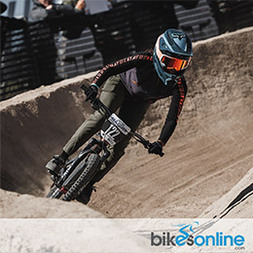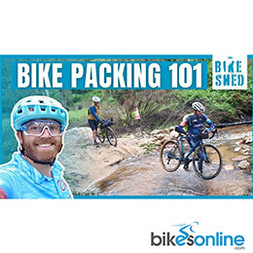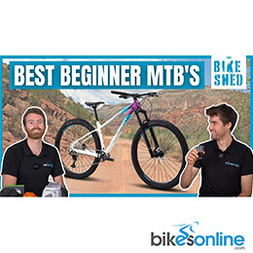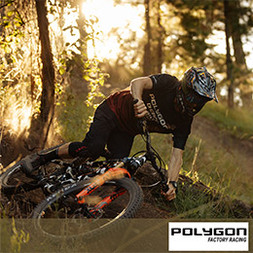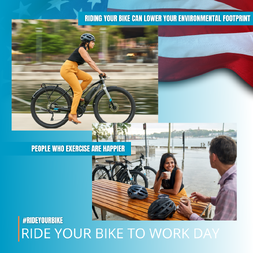What Do All the Numbers Mean?

Mountain bike frame geometry has grown and advanced so fast over the last few years that it is getting harder to find the correct size. Newer “medium” size bike measurements resemble the large or extra large frames from the past. In this blog we are going to talk through what the numbers mean, how they affect the way a bike rides and handles. Buckle in because it is going to be a long ride.
The Front
There are 3 main measurements to take note of up the front of a bike, the head angle, stack, and reach. All 3 of these can affect your body position on a bike and what it feels like to ride on the trails.

The head angle refers to the angle at which the forks sit in comparison to a horizontal floor. The slacker the head angle, the more stable the bike is on a descent but the more effort is needed to stop the wheel from “flopping” on the way up. A steeper head angle is the opposite of a slack head angle, easier to ride up and hard to ride down.
While some may say head angle doesn’t affect the bike's fit, a slacker head angle requires more weight on the front wheel to gain maximum traction, if your bike is too long it is hard for you to weight the front end. If your bike is too short and you have a steeper head angle, you may feel like the bike will pitch you over the bars. The balance of the two is important.

Reach is one of the most important measurements when sizing your bike. The measurement is measured from the centre of the head tube back to a vertical line directly up from the bottom bracket. This measurement gives an indication of how much room there is up the front of the bike when in the attack position.
A longer reach is more stable and gives a rider room to move but, greater weight shift is needed to push on the front wheel. A shorter reach gives a rider a more agile ride and requires less input to weight the front wheel so it excels on climbs. The down side to a short reach can make a bike feel unsettled
.jpg)
Stack refers to the height of the front of the bike and is measured from the front axle to the tops of the head tube. A taller stack will lead to a more upright riding position and give you a better stance on steep descents. A shorter stack will give you the opportunity to get your weight over the front and keep the front weighted. A lower stack is ideal for climbing because it will stop the front wheel popping up and makes the bike easier to control.
The Middle
Seat height used to be a big determining factor for bike sizing but thanks to dropper posts it isn't a big deal at the moment. When looking at the seat tube you need to ensure it can accommodate your seat height with the maximum amount of drop from your dropper. This is so you can get the maximum benefits from your dropper.
.jpg)
Seat tube angles have been getting steeper as the head angles get slacker. Remember how we said slacker head angles need more weight on the front to keep the front wheel under control? Well, the steeper seat tube takes a rider's weight and moves it forward when seated. This forward seated position naturally places a rider's weight over the bars so they don't need to exert excess effort controlling the front wheel. A more efficient climbing position makes even the biggest bikes climb well.

While reach is important to your standing position, top tube length gives you a very good idea of how you will feel while seated. A shorter top tube will have you in a more upright and tighter riding position. A longer top tube can give too much room and feel like you are reaching, this may lead to neck pain, shoulder strain and a sore lower back. If you experience these symptoms look for a shorter reach. If your knees are hitting the bars and the bike is too cramped a longer reach would be a lot nicer.

The rear of a bike doesn’t often come into conversation when discussing size however with the huge changes with to reach numbers over the years it now makes a difference. Long reach frames with short chainstays can loop out as the rider balance is off. So, to combat this some companies have increased chainstay length as the sizing gets bigger. This centralises the rider's weight and keeps the bike balanced. But it can lead to a sluggish, harder bike to turn around.
The Rider Triangle.
The rider triangle is one of the best ways to consider how a bike fits. Imagine your handle bars are one point of the triangle, your bottom bracket is the other point and your body's centre of mass is the last point.

Ideally on a mountain bike we want your centre of mass to be centred between the two wheels. Of course your body position is going to be dynamic as you move around the bike but, we want your natural point of return to be in the middle.
The reasoning behind this is so a rider's movements around the bike are equal and effective at all times. Every rider is different due to everyone's body geometry varying and the way they ride can differ so much. Riders with longer arms and legs can ride a shorter reach bike because their torso (centre of mass) isn't as long and their longer arms will center the weight. Longer torso bodys require a longer reach to keep their body weight centred because they don't have as much leverage or movement on the bike.

When considering your rider triangle it is important to consider the height of your centre of mass. If your bike is too short, your centre of mass may be high compared to the bb and handlebars. To ride a shorter bike you will have to crouch down and cramp up to reduce the chances of going over the handlebars. We want to keep your center of mass as low as possible, however, if it is too low and you are stretched out then it will be hard to adjust where your weight is on a bike.
 As a rule it is important to consider your current bike and riding style when you upgrade a bike. It is important to read the geometry and translate it to your rider triangle. If a bike is too long your body mass may be too far back and centering your weight to the front may compromise your attack position. Too short and you may be riding in a hunched, cramped position and you may be avoiding getting thrown over the bars all the time. Take time to analyse your body and riding position so you are on the best size.
As a rule it is important to consider your current bike and riding style when you upgrade a bike. It is important to read the geometry and translate it to your rider triangle. If a bike is too long your body mass may be too far back and centering your weight to the front may compromise your attack position. Too short and you may be riding in a hunched, cramped position and you may be avoiding getting thrown over the bars all the time. Take time to analyse your body and riding position so you are on the best size.

;
Leave a comment
- Training Tips for a Beginner Cyclist
- Industry Reviews
- Worth-it Blogs EP#3: Budget Hardtail Upgrades
- Drop bar Buyer's Guide
- Commuter Bike Guide
- The Bicycles Online's Company Fitness Challenge
- Mountain Bikes Buyer's Guide
- Bikes Online Does Sea Otter
- Worth-it Blogs EP#2: Hardtail Hitters
- Bikepacking 101
- Sustainable Strategies
- EWS #5: Burkville
- Pinned With Polygon | The gang goes to Crankworx
- Is It Worth Buying an Ebike? Weighing the Pros
- Is a Mountain Bike Good for Commuter Use? Exploring Versatility and Performance
- Ultimate Guide to Buying Cycling Gear Online
- Essential Bike Accessories for Every Cyclist
- Are Electric Bikes Safe? Unpacking the Truth for New Riders
- Mountain Bikes vs. Road Bikes: Which Is Safer for Your Cycling Adventures?
 USA
USA AUS
AUS

